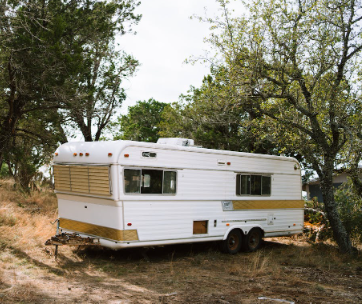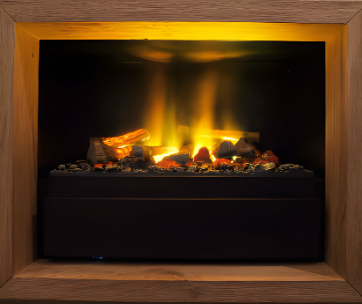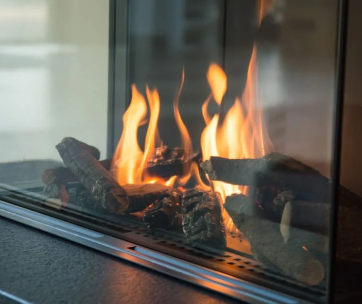Electric fireplaces and hearths, to most people, even using the two in the same sentence is amusing. If you are one of the numerous people seeking clarity on this unconventional combination, you came to the right place.
In this article, based on our experience of having a hearth on an electric fireplace, we have gone ahead and given an in-depth analysis of everything you need to know. Without leaving any stone unturned, we have touched on:
- What is a fireplace hearth?
- Different types of hearths
- Do electric fireplaces need a hearth?
- Placing an electric fireplace on a hearth.
- Building an electric fireplace hearth.
- What is a fireplace hearth?
In this context, a hearth is the floor area in a traditional fireplace often extending into the room area. It is made of non-combustible materials such as granite, tiles, concrete, or limestone. Fireplace hearths are designed to be large and thick. That way they prevent sparks from spreading to nearby combustible materials especially since wood-burning and gas fireplaces tend to reach high-temperature levels.
- Different types of hearths.
Hearths come in an array of materials that vary in terms of thickness and size. The different materials used in making hearths include:
- Limestone
Limestone is a common material used to make hearths for gas and electric fireplace. However, it is deemed unsuitable for wood-burning fireplaces since the heat from wood-burning fireplaces is too intense. The high level of heat causes limestone to crack.
Another downside of limestone is that it comes in limited color shades (grey, white and tan)
- Marble
Marble is also quite common since it is suitable for all kinds of fireplaces because of its high level of durability.
- Soapstone
It is highly appreciated for its high heat resistance but the bummer is that it comes in limited color options.
- Granite
Loved for its ability to endure high temperatures, granite is also highly durable, and affordable and comes in a number of patterns and colors.
- Ceramic
Ceramics is impressive since it is strong enough to handle the heat from any type of fireplace and comes in any color, pattern, or finish.
- Do electric fireplaces need a hearth?
Knowing that electric fireplaces heat a room without real fire but by using an internal heater and showcasing an illusion of a flame on its screen, the answer to this question is typically no.
But with the evolution of electric fireplaces over time, hearths can now be used with electric fireplaces. This is especially done for aesthetic reasons. Nonetheless, they can be used to prevent the unit from losing heat and to protect anyone sitting close to the fireplace from any potential danger from the unit.
From first-hand experience, upon seeing an electric fireplace that is perfectly fitted on a fireplace with a hearth, from afar, you would not tell the difference with a real built-in fireplace.
- Placing an electric fireplace on a hearth.
If you want to make your electric fireplace look built-in, the trick is to install the unit in an open fireplace with a hearth. Alternatively, you can purchase a hearth pad and use it as a base for your fireplace. What is impressive is that you can take this idea a step further by pairing the hearth on your fireplace with fake fuels to help sell the image of a real fireplace even more.
If you lack an open fireplace with a hearth, you can hire a professional and in no time the work will be done. But if instead, you would want to engage in a DIY hearth-making project we have got you covered.
- Building an electric fireplace hearth
When engaging in a DIY project to build an electric fireplace hearth you need to understand two essential requirements, which are:
- Hearth regulations.
First and foremost, to ensure that you have a safe hearth for your fireplace you are required to cover the space directly in front of your fireplace with a non-combustible covering. Additionally, it would be great if the extension is distinguishable from the rest of the fireplace and the floor area as well.
When building the extension you need not worry about the measurements of the front extension since each fireplace manufacturer determines the size of the extension that is optimum. All that you will need to do is pick up a phone and confirm the measurements with the manufacturer of the unit you own.
- Hearth height
Secondly, the other essential factor to have in mind before engaging in your DIY hearth-building project is the height of the hearth.
Hearths can either be raised or on the floor. The ideal height of a hearth is entirely dependent on your preference. When making the decision on the type of hearth you want, it is important you know that the height you settle for will directly impact the budget of your project.
No pun intended, with a floor hearth the cost will be low. This is because you will require fewer materials, such as bricks, in undertaking the project. Unfortunately, a floor hearth will be a safety hazard if you own a pet or have kids.
On the other hand, a raised hearth will be a safe option if you own a pet or have kids. In addition, it will be a great point of attraction in the room you have installed it in. The only issue is that it will be more costly to build one since you will require more materials.
Sticking to the topic of materials, here is a list of materials and items you will require when building an electric fireplace hearth:
- Gloves
- Hammer
- Mallet
- Stone saw
- Level
- Mortar mix (cement, sand, water)
- Bricks
- metal support bar
- Safety glasses
- Mixing tub
Building process
After identifying the ideal location to construct your hearth, let us go to the actual building process.
The steps are:
- Disconnect the electric fireplace unit and move it aside to create space for the construction work to take place.
- Using the stone saw cut the bricks into half. This will allow you to create a pattern with them easily once you get to the brick-laying phase.
- Next, make stencil guidelines on the wall to improve accuracy during the rest of the installation process. Make sure you adhere to the measurement requirements from the unit’s manufacturer
- Prepare the mortar mix and ensure it is of the right consistency.
- Make the fireplace surround. Begin by placing some mortar on the floor to act as the base, and then lay the bricks.
After completing the first layer of bricks, place another layer of mortar on top of the bricks and lay the next layer of bricks. Repeat the process until you reach the required height on the guidelines.
- Once you are done with the fireplace surround, proceed to build the fireplace top over the fireplace insert opening. First place the support bar which will hold the bricks as you build. Then place a layer of mortar on top of it and lay the bricks as you previously did, until you reach the top point on the guidelines.
- Similar to how you lay the bricks, now use the mortar to lay the hearth bricks. The number of bricks you use will depend on the height you want your hearth to be. For instance, you can place four hearth bricks deep and four hearth bricks high.
- Finally, get rid of excess mortar on bricks, and fill in gaps and craters so that you have a clean and neat finish.
Conclusion
Hearths are conventionally used with wood burning and gas fireplaces to mitigate the dangers associated with fire indoors. But you can get creative and use them to make your electric fireplace the focal point in any room.
After going through this article we hope your DIY electric fireplace project is now an easy one to complete. And more importantly, we hope you have gained clarity on the unconventional combination of hearths and electric fireplaces.






























Comments